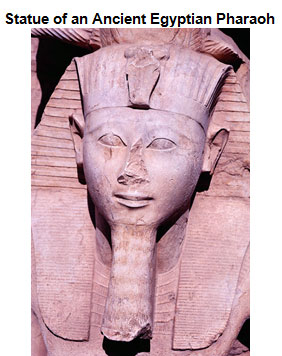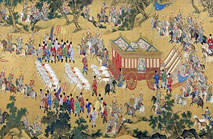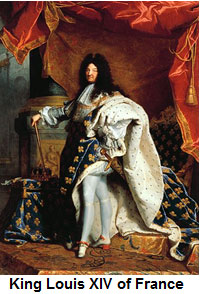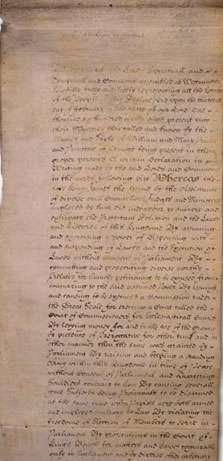
Political systems have existed since the time of ancient civilizations. Early political systems involved a blend of monarchies and theocracies. In Mesopotamia, one of the river valley civilizations, kings, who were also the high priests of their respective cities, ruled the main cities.

Another example of an early monarchy is the pharaohs of Egypt. Pharaohs were religious and political leaders who were responsible for the well-being of all Egyptians. The people of ancient Egypt believed that pharaohs represented gods on Earth. Pharaohs led by divine right because they were both gods and kings. They felt they had the right to rule because God chose them.
As new civilizations began to emerge, more monarchies began to appear. Look at a few examples listed below.
China |
Roman Empire |
 |
 |
| The emperors of China ruled according to the Mandate of Heaven philosophy. One of the main principles of the mandate states that heaven grants the emperor the right to rule, similar to the divine right to rule. Dynasties controlled China and would remain in control until it lost power or was overthrown for abuse of power. This dynastic rule continued as new dynasties were made with new claims of the Mandate of Heaven. | Rome, under Emperor Augustus Caesar, was a successful empire that experienced a period of peace and cultural prosperity. His rule inspired later monarchies. |

Monarchies began to flourish in Europe during the Middle Ages. Kings and queens came into power in many European countries. During the 1500s, many monarchies became absolute monarchies. This is a political system in which the king or queen has total control over the lives of his or her subjects.
By the 1500s, France had become divided by religious wars. After King Louis XIV took reign in the mid-1600s, he became an absolute monarch. His reign is often regarded as an example of superior absolutism. King Louis XIV was able to unite France and elevate the country’s status in the world. His success was due in part to the cultural transformation of France; France became a refined and enlightened society. Under his rule, France became a powerful European country.
Changes to the way that monarchs ruled came by way of The Enlightenment (mid decades of the 17th century through the 18th century), a period when European philosophers questioned many traditional beliefs and developed new ways of thinking.
The Enlightenment, also called the Age of Reason, inspired political philosophers to develop alternatives to monarchies. The result was the development of new forms of governments. One such alternative was limited monarchy, also called constitutional monarchy. This form of government involves the king or queen serving only as a figurehead, and his or her power is limited by the constitution. The power lies with a legislative body, such as Parliament.
Enlightened thinking evolved into action in 1689 when the English Bill of Rights was passed. This act limited the power of the English monarchy and gave more power to Parliament. This act also gave more civil and political rights to English citizens.

"By assuming and exercising a power of dispensing with and suspending of laws, and the execution of laws, without consent of parliament."
Excerpt from the English Bill of Rights, 1689.
How does this excerpt reflect the implementation of a limited monarchy in England?

Sources of images used for this section as they appear, top to bottom: